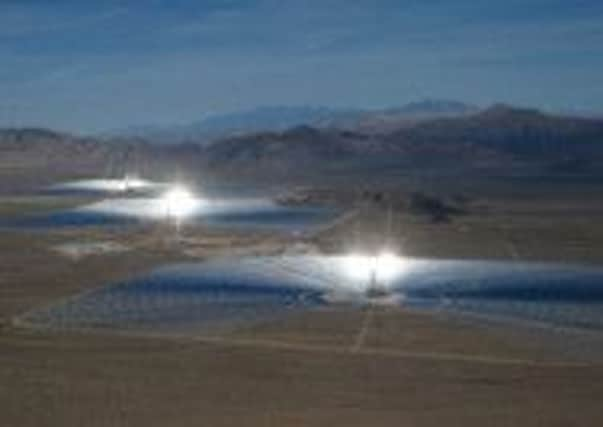Wild Side: A modern death ray?


In the USA for example, the new BrightSource solar power plant in California’s Mojave Desert has been described as ‘a death-ray incinerating birds mid-flight’.
The site spans 1,600 hectares, cost $2.2 billion to build, and apparently frazzles hundreds of thousands of birds per year.
Advertisement
Hide AdAdvertisement
Hide AdThe plant applies around 350,000 mirrors, each the size of a garage door, to focus sunlight on three boiler towers.
A side effect is a death-ray, instantly igniting and killing birds or other wildlife that fly through the intense light beam.
For most solar energy farms, this is not a problem since they generate via ‘photovoltaic cells’ (wafers of silicon sandwiched between sheets of glass). These produce electricity directly by intercepting sunlight.
However, and this is where the problem lies, there is another method called ‘concentrated solar power’ or ‘solar thermal power’, using large number of mirrors to focus sunlight on a tower in the centre of the plant. This holds a tank of fluid, (super-heated water, molten salt, or similar), and when heated, this generates electricity through conventional steam turbines.
Advertisement
Hide AdAdvertisement
Hide AdNorth American conservationists are worried about what may happen as BrightSource develop further sites.
Wildlife officials worry that concentrated solar power plants could be ‘mega-traps’, first attracting insects, and then drawing insectivorous birds.
Anything that comes too close to the heating tower is speedily ‘cooked’ by intense, focused sunlight.
Site workers call these birds ‘streamers’ because they ignite in mid-air, falling to the ground with a stream of smoke.
Advertisement
Hide AdAdvertisement
Hide AdUS Federal wildlife investigators calculate one streamer every two minutes, which works out as hundreds of thousands per year. Estimates vary from this, down to 28,000 birds, or, from the company, 1,000 annually.
BrightSource is now considering a much bigger plant, that conservation officials think might be four times more dangerous. In response to concerns, BrightSource offered $1.8 million compensation for anticipated bird fatalities.
A problem, I suggest is that many birds mistake the glare of the mirrors for water and are attracted to it and to their deaths.
This example demonstrates how complex and even unexpected wildlife impacts may be.
Advertisement
Hide AdAdvertisement
Hide Adn Professor Ian D. Rotherham, researcher, writer and broadcaster on wildlife and environmental issues, is contactable on [email protected] – follow ‘Ian’s Walk on the Wildside’, www.ukeconet.org